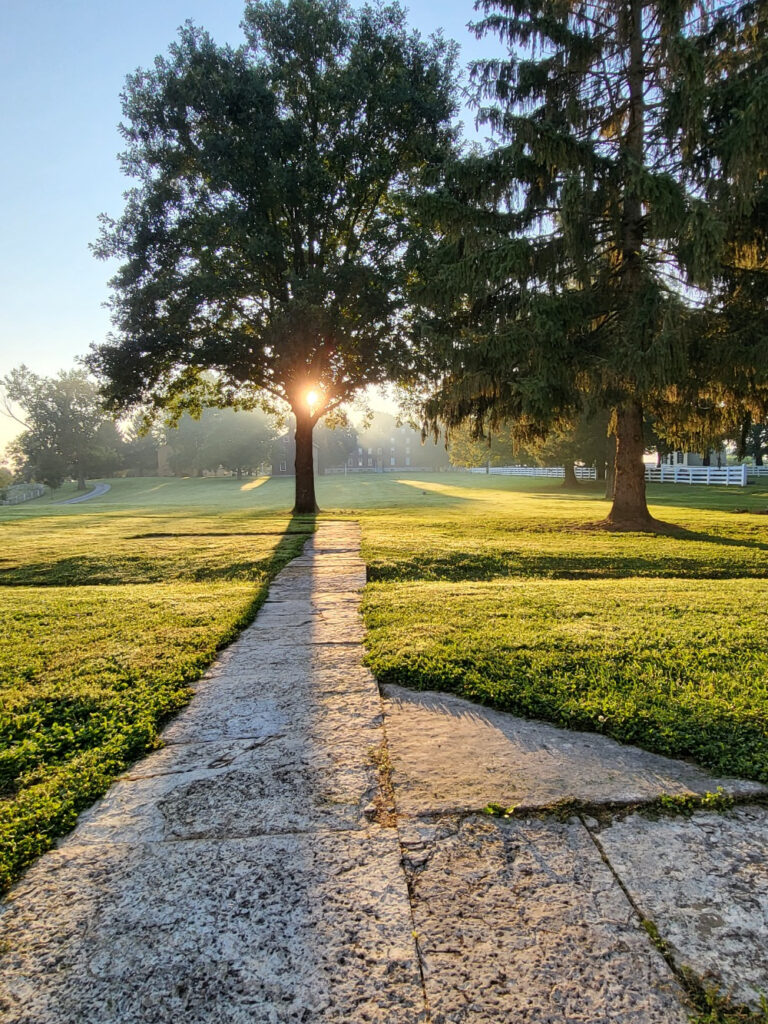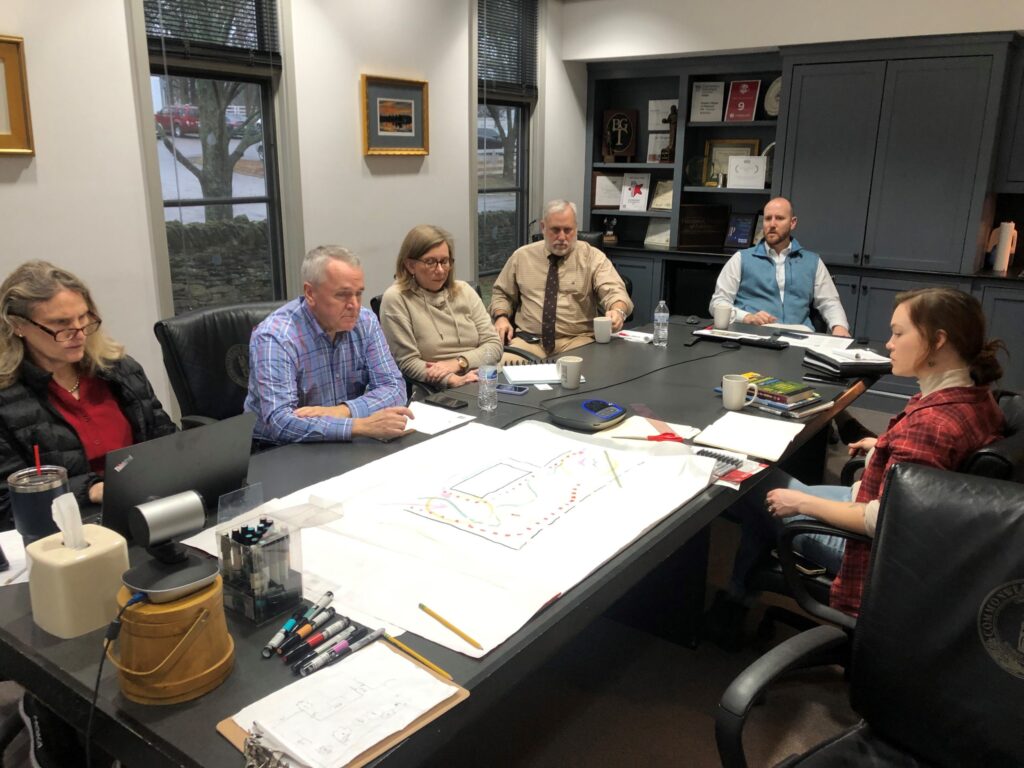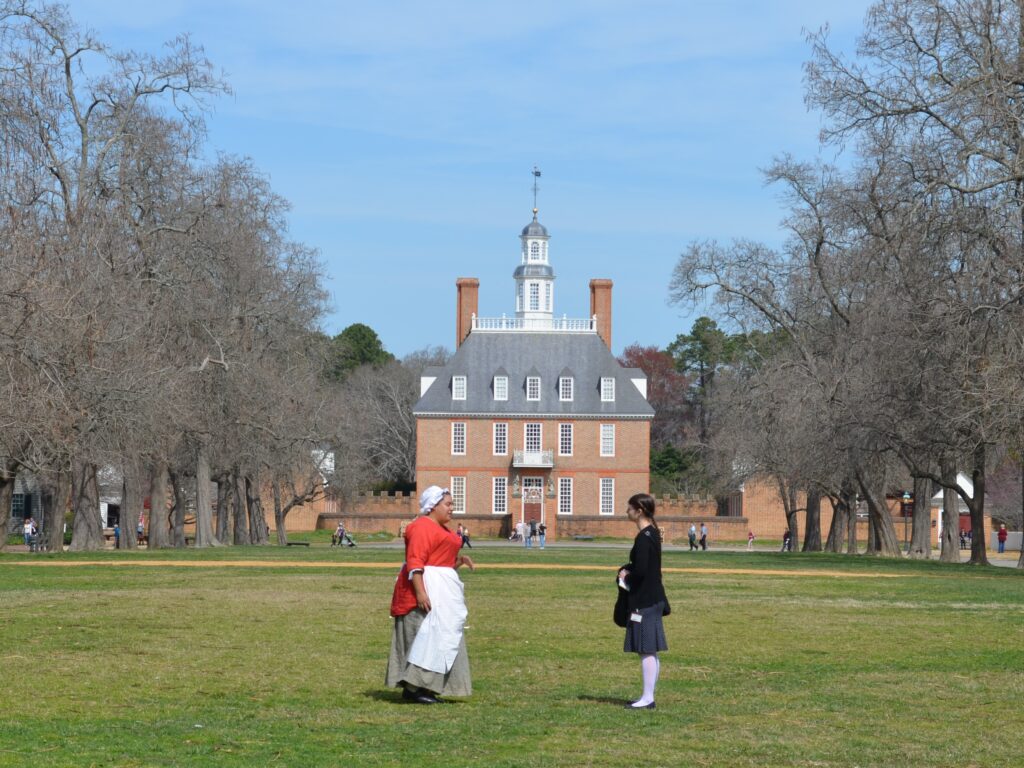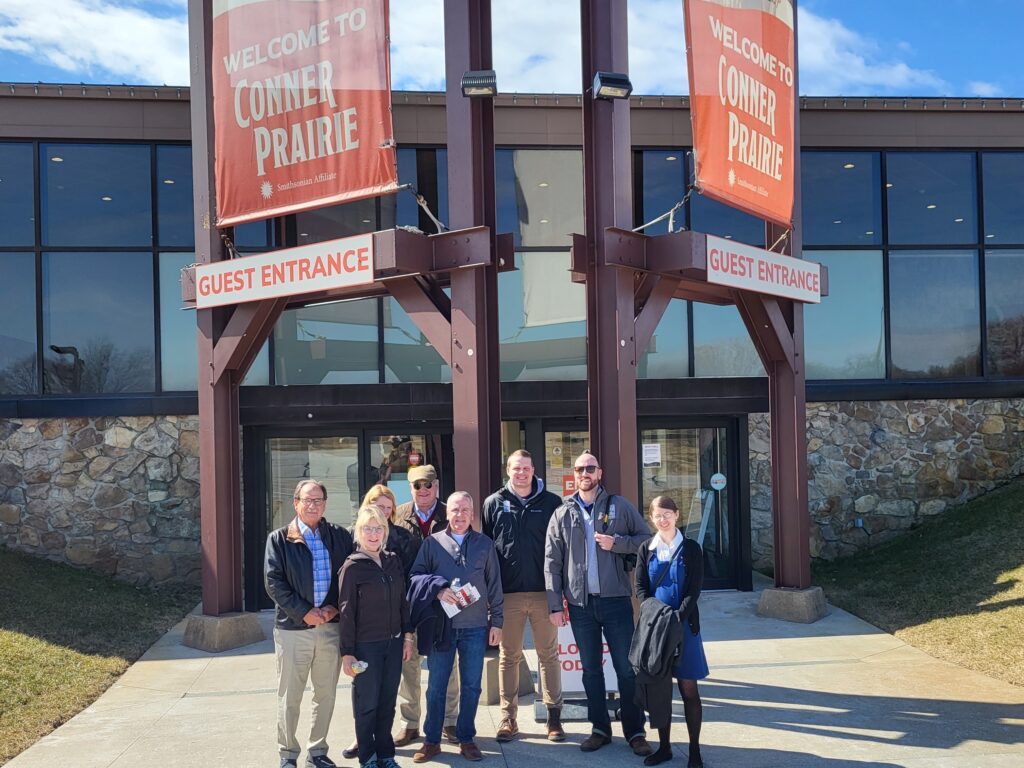Creating a New Long-Range Plan for Shaker Village
Billy Rankin, Vice President of Public Programming and Marketing
For most visitors to Shaker Village, the typical conversation is framed in the “past tense.”
Who lived here? How were these buildings used? What did this look like in the 19th century? What did the Shakers believe?
As Kentucky’s largest National Historic Landmark, this makes perfect sense, of course. It has been over 200 years since Shaker missionaries first came to our state, and the rich and vibrant stories of Pleasant Hill’s rise, decline and restoration have attracted millions of visitors since our nonprofit opened the Village to the public in 1968.

There are a committed few, however, that have recently been framing their conversations about Shaker Village in the “future tense.” With these conversations come a very different set of questions.
How will we use this building? What will happen in this space? What infrastructure is needed to support higher visitation? What will our guests need, that we don’t already provide? How do we ensure Shaker Village will be healthy for generations to come?
After 55 years of sharing Pleasant Hill with the public, Shaker Village is creating a new Long-Range Plan.
Building on Success
So, what has prompted this new planning process, and what are the intended outcomes?
Over the last decade, Shaker Village has tackled a number of major challenges and celebrated many successes. We have made great strides in historic preservation, exhibit installation, care of the grounds, upgrades to infrastructure, growth of our endowment and increases in annual visitation, passholders and individual donors. There is still much to be done to preserve and care for the buildings and property at Pleasant Hill, but we have turned an important corner. Our successes have built momentum, and with this momentum comes the opportunity for continued growth.

In late 2021, the Shaker Village Board of Trustees, recognizing this pivotal moment in our nonprofit’s history, created a Long-Range Planning Committee (LRPC) and commissioned it with developing a new Master Site Plan for the property. The committee, chaired by Centre College President Emeritus Dr. John Roush, is comprised of a select group of architects, preservationists and business people from the Board of Trustees, joined by members of the Village’s Senior Leadership staff.
Doing Our Homework
The LRPC wasted no time getting started with their assignment. In the last 18 months this committee has conducted studies of Shaker Village’s operations and identified key challenges and opportunities.

Members of the LRPC have made site visits to nearly 20 other cultural sites to draw comparisons and learn from shared experiences. These visits, to organizations including Colonial Williamsburg, Conner Prairie, Bernheim Forest, Yew Dell Gardens, and the Kentucky Historical Society, have inspired the team at Shaker Village not only through learning of successes, but by also learning of mistakes made by each organization along the way.
The LRPC also conducted a series of interviews with architects, landscape designers and master site planning specialists to prepare for the questions and inevitable hurdles Shaker Village will face when implementing its own Master Site Plan.
Staying on Mission
One bit of wisdom the LRPC has taken from their study has been: “just because you can do something, doesn’t mean you should do something.” Shaker Village of Pleasant Hill is an incredibly special place, and always has been. As our team works to enhance guest experiences, grow visitation and increase accessibility, it is incredibly important that nothing we do detracts from what the Village already is.

This perfect balance of preservation and hospitality is where the magic of Shaker Village is found.
To guide our team’s efforts, every idea and concept is run through a series of “strategy screen questions” and ultimately viewed through the lens of our mission, to inspire generations of guests through discovery, by sharing the legacies of the Kentucky Shakers.
As our team examines needs for additional overnight rooms, kitchen space, programming areas and more, coming back to our strategy screen and mission ensures that future projects are in line with the spirit and identity of Shaker Village, and only augment the overall experience of the site.
What Comes Next?
In the coming months, the LRPC will select and partner with a firm that specializes in master site planning for large, diverse properties. Together, they will refine a list of projects and initiatives that help to preserve the property, while enhancing guest experiences. At the end of this process, the leadership of Shaker Village will have drawings, site maps and other renderings to share this vision for the future to the public.
According to Dr. Roush, “Shaker Village is going to be here, as an organization and as an historic site, for a very long time. We are taking our time to plan for the long-term. Some tasks we discuss may be accomplished relatively soon, while others are years away, but the important thing is that we have a thoughtful plan that provides a playbook for the success and longevity of this incredibly unique place.”
Follow Our Progress
As plans develop, you can expect to hear more about the progress on social media, through emails and on the Shaker Village blog. We hope you follow along!
If you have questions about master site planning at Shaker Village, please reach out to our Vice President of Public Programming & Marketing, Billy Rankin at [email protected] or 859.734.1574.